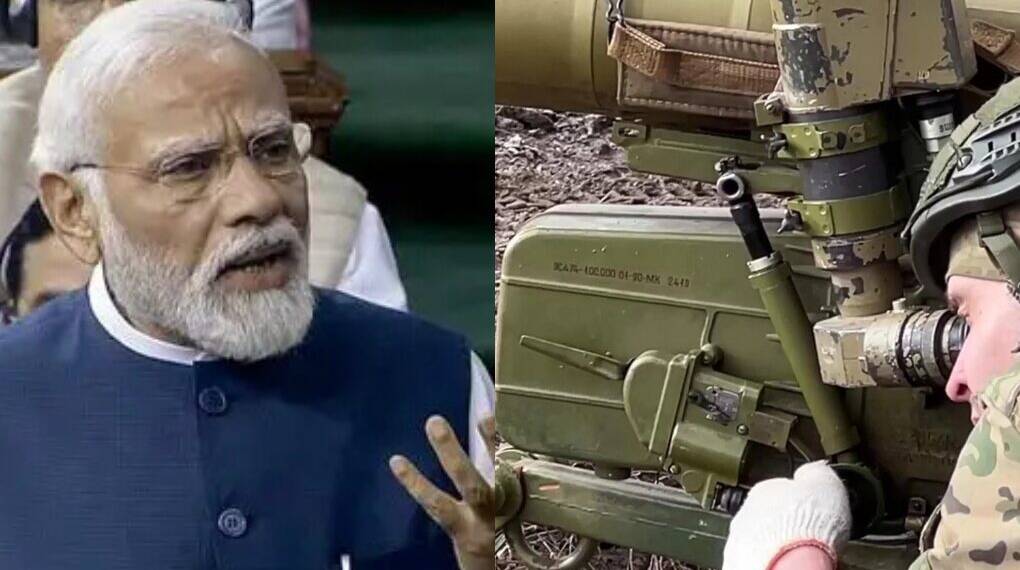India’s participation in Russia’s Zapad-2025 military exercise has set off a storm of headlines across Western media, with claims that New Delhi has “crossed the red line” and “sided with Moscow against NATO.” Yet, behind the sensational coverage, the facts suggest a far less dramatic picture.
A Routine Exercise, not a Provocation
Zapad, which means “West” in Russian, is a series of large-scale military exercises that Russia and Belarus have held every four years since the Soviet era. This year’s drills, conducted from September 12 to 16, involved nearly 100,000 personnel across 41 training grounds in both countries.
The exercises simulated air defense operations, landing missions with drone support, mock cruise missile strikes, and even the deployment of non-strategic nuclear weapons by Belarusian forces. Russian President Vladimir Putin attended the final day in uniform, underscoring the exercise’s importance to Moscow and Minsk.
But military analysts emphasize that Zapad has always been framed as a defensive drill—much like NATO’s own exercises—not as a direct plan to attack Western nations.
Who Took Part?
Contrary to media portrayals of Zapad-2025 as a two-nation drill aimed at NATO, the exercise was multilateral.
Active participants included Russia, Belarus, India, Bangladesh, and Iran, among others.
Observers from 23 countries were also present—most notably the United States, Turkey, and Hungary, all NATO members.
This international presence signals transparency, rather than confrontation.
India’s Limited Role
India’s involvement was modest: 65 personnel drawn from the Army’s Kumaon Regiment, along with small units from the Air Force and Navy. For comparison, in Zapad-2021 India had sent around 200 troops.
Military experts note that such participation is not unusual. India routinely takes part in more than 100 bilateral and multilateral exercises annually—with countries as varied as the U.S., France, Russia, and even China through the SCO framework.
Exercises like Malabar with the U.S. and Japan, Tiger Triumph with the U.S. Navy, and Indra with Russia highlight India’s policy of strategic autonomy—maintaining defense ties across multiple blocs rather than aligning exclusively with one.
Western Media Reaction
Despite the limited scale of India’s presence, Western outlets reacted strongly.
The Times of London suggested India had “crossed the red line.”
The Financial Times quoted EU officials calling the timing “awful” and “embarrassing.”
Social media commentary accused Prime Minister Narendra Modi of “siding with Putin” and “betraying Washington.”
Yet this outrage glossed over crucial facts: the United States and Hungary were themselves present as observers, the drills were defensive in nature, and India’s participation was symbolic rather than substantial.
Analysts argue the uproar reflects agenda-driven narratives rather than a sober reading of the situation.
Why India Draws Attention?
India’s involvement carries outsized significance because of its strategic weight. Ranked fourth in the world’s military strength after the U.S., Russia, and China (according to the 2025 Global Firepower Index), India is viewed as a pivotal player in global geopolitics.
New Delhi has maintained strong defense and energy ties with Moscow—including imports of discounted Russian oil—while simultaneously deepening technology and security partnerships with the West through platforms like the Quad.
This multi-alignment approach often frustrates those who expect India to firmly “choose a side.” That frustration, observers say, explains why India’s 65 troops drew more attention than Bangladesh’s participation or even the presence of U.S. and Hungarian observers.
At its core, Zapad-2025 is neither a war rehearsal against NATO nor a sign that India is breaking away from Washington. It is a routine military exercise, one of dozens that India participates in every year.
The uproar over India’s involvement says less about the exercise itself and more about the way international media and political actors amplify narratives for strategic ends.
As one online commentator bluntly put it: “India sends a handful of troops to multilateral exercises every year—including with Russia. This isn’t against NATO. Even the U.S. was there as an observer. Bullshit smells like bullshit, even with a bow on it.”
For India, the takeaway is clear: it will continue to balance East and West, charting an independent course in a multipolar world—despite the noise.








